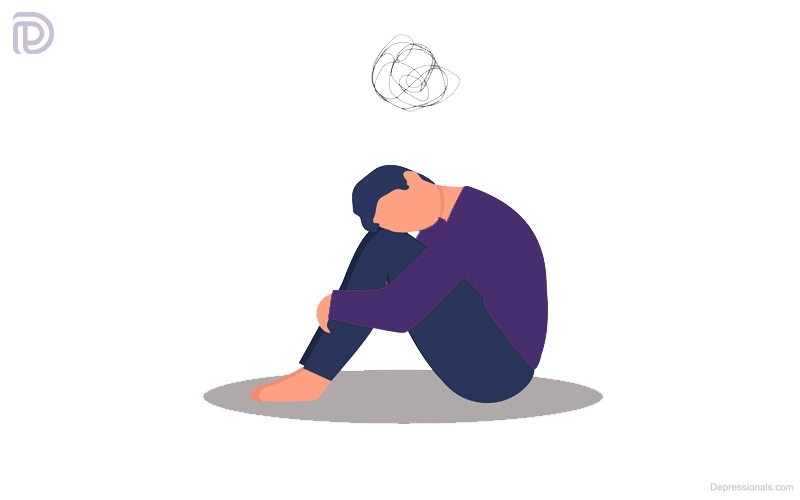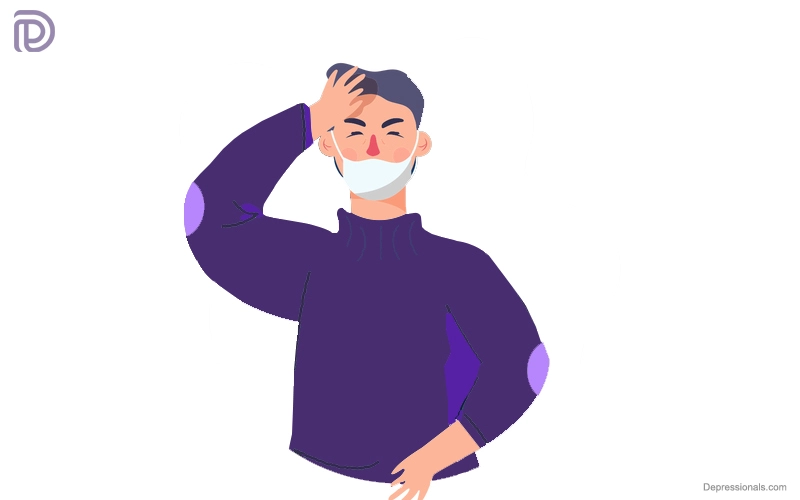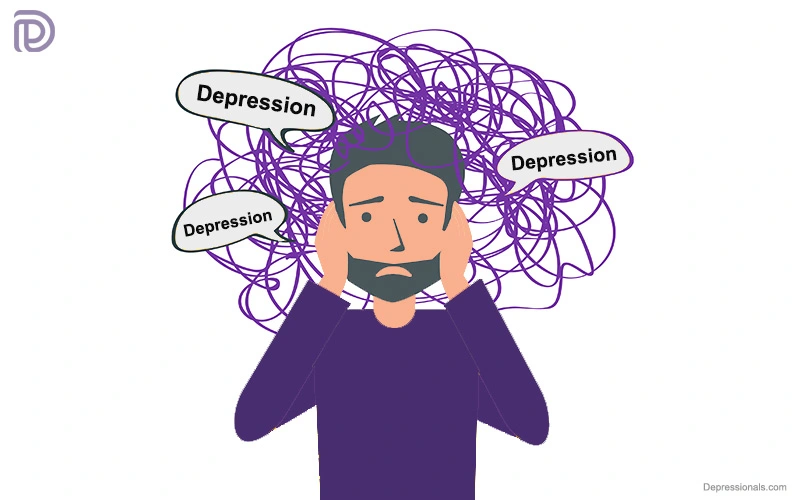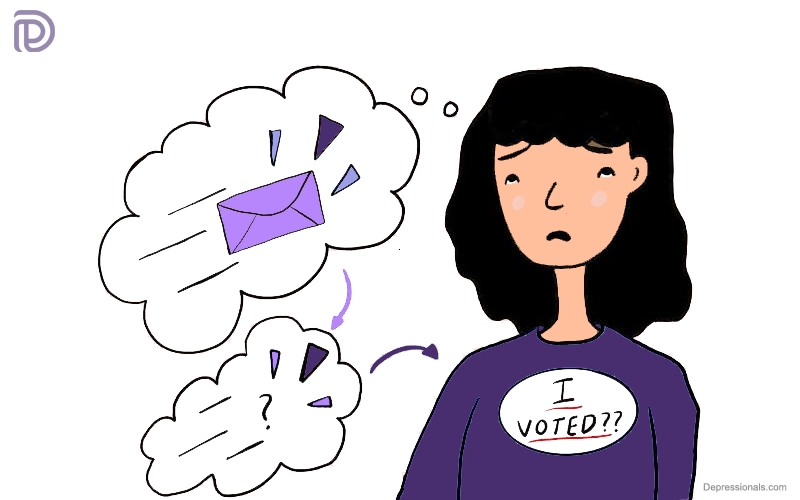What is endogenous depression?
Endogenous depression is a type of depression that occurs internally. Endogenous depression is rarely diagnosed nowadays, even though it used to be viewed as a distinct disorder. It is instead diagnosed as MDD. The clinical term for MDD is Major Depressive Disorder, a mood disorder characterized by periods of persistent and intense sadness. Sleep and appetite are negatively affected by these feelings, as well as mood and behavior. Every year, more than 7 percent of American adults suffer from MDD. Researchers aren’t sure how depression develops. Theoretically, it can result from a combination of:
- Genetic factors
- Biological factors
- Psychological factors
- Environmental factors
Those who have lost a loved one, ended a relationship, or experienced trauma may become depressed. A stressful event or other trigger is not required for endogenous depression. There is often no apparent cause for endogenous depression.
Related: Double Depression Disorder
What are the differences between endogenous depression and exogenous depression?
Traditionally, researchers differentiated between endogenous depression and exogenous depression based on whether or not a stressful event occurred before the onset of the clinical symptoms:
There is no stress or trauma associated with endogenous depression. This means that it is not caused by external factors. Genetic and biological factors may be the primary causes. Thus, endogenous depression may also be called biological depression.
Stress or trauma can trigger exogenous depression. Reactive depression is the most common type of exogenous depression.
The phrase “two types of MDD” used to be differentiated by mental health professionals, but not anymore. Several symptoms of MDD have been used to diagnose the disorder by mental health professionals.
Related: Loneliness and Depression
What are the symptoms of endogenous depression?
Symptoms of endogenous depression begin suddenly and without apparent justification for some people. It is possible to experience different symptoms depending on the type, frequency, and severity of the condition.
MDD-like symptoms can also be experienced with endogenous depression. These symptoms include:
- Feeling hopeless or depressed all the time
- Involuntary withdrawal from previously pleasurable activities or hobbies
- Fatigue
- Lack of motivation
- Inability to concentrate
- Sleep issues
- Social isolation
- Suicidal thoughts
- Headaches
- Aches and pains
- Eating too much or losing appetite
Read: Situational Depression
How is endogenous depression diagnosed?
Medical professionals and mental health professionals can diagnose MDD. The first step is to review your medical history. Don’t forget to let them know if you are taking any medications or have any existing medical conditions. Additionally, it can be helpful if you let them know if you or any of your family members suffer from MDD or have had it in the past.
You will also need to describe your symptoms to your health care provider. During your visit, your doctor will ask you when the symptoms began and whether they occurred after an emotionally stressful or traumatic event. Several questionnaires may be given by your healthcare provider to assess how you feel. Your answers to these questionnaires may assist your healthcare provider in diagnosing MDD.
Several criteria in the Diagnostic and Statistical Manual of Mental Disorders (DSM) must be met before someone is diagnosed with MDD. Mental health professionals frequently use this manual to diagnose mental health conditions. An MDD diagnosis must be accompanied by a “depression or loss of interest in daily activities lasting more than two weeks.”
However, the current version no longer distinguishes between endogenous and exogenous depressions. If MDD symptoms appear for no apparent reason, mental health professionals are likely to diagnose endogenous depression.
Read: Melancholic Depression
How is endogenous depression treated?
A combination of medication and therapy can help those suffering from MDD overcome their symptoms.
Depression medications
People with MDD are commonly treated with SSRIs, as well as SNRIs, which are selective serotonin reuptake inhibitors. Although tricyclic antidepressants (TCAs) may be prescribed to some people, these drugs are not used as frequently as they once were. Some brain chemicals can help to reduce depression symptoms.
Patients with MDD may take antidepressant medications such as SSRIs. Here are some SSRI examples:
- Paroxetine (Paxil)
- Fluoxetine (Prozac)
- Sertraline (Zoloft)
- Escitalopram (Lexapro)
- Citalopram (Celexa)
An initial side effect of SSRIs may include headaches, nausea and insomnia. Typically, these symptoms subside after a short period of time.
People with MDD can also use SNRIs as antidepressant medications. SNRI examples include the following:
- Venlafaxine (Effexor)
- Duloxetine (Cymbalta)
- Desvenlafaxine (Pristiq)
People with MDD may benefit from TCAs as a form of treatment. Some examples are:
- Trimipramine (Surmontil)
- Imipramine (Tofranil)
- Nortriptyline (Pamelor)
Related: How to Get Out of a Depressive Episode
It is possible for TCAs to cause more serious side effects than those associated with other antidepressants. There is a possibility that TCAs will cause drowsiness, dizziness and weight gain. Make sure you carefully read the pharmacy’s information and talk to your doctor if you have concerns. Symptoms usually improve after taking the medication for at least four to six weeks. Symptoms may not improve for up to 12 weeks in some cases.
Talk to your provider about switching to another medication if a certain medication doesn’t seem to be working. Several studies have shown that people who did not improve after taking their first antidepressant medication were much more likely to improve when they went on to take another medication or a combination of drugs.
Taking your medication should not stop when your symptoms improve. The provider who prescribed the medication should be able to stop you from taking it if needed. The drug might need to be discontinued gradually rather than all at once. Sudden discontinuation of antidepressants can cause withdrawal symptoms. In some cases, MDD symptoms may return if treatment is halted too soon.
Related: How to Help Someone with Depression
Depression therapy
The process of psychotherapy, or talk therapy, requires regular meetings with a therapist. Your condition and any underlying issues may be helped through this type of therapy. Cognitive behavior therapy (CBT) and interpersonal therapy (IPT) are the main forms of psychotherapy.
Using cognitive behavior therapy, you can replace your negative beliefs with healthier ones. It is possible to improve how your brain handles stressful situations by practicing positive thinking and limiting negative thoughts.
You may benefit from IPT if you have troubled relationships that contribute to your well-being.
When it comes to treating MDD, most people need to combine medication and therapy.
Electroconvulsive therapy (ECT)
The use of electroconvulsive therapy (ECT) may be necessary if medication and therapy don’t relieve symptoms. ECT sends pulses of electricity to the brain through electrodes attached to the head, triggering a brief seizure. Treatments like this aren’t as scary as they sound, and they have improved greatly over the years. Changes in chemical interactions in the brain may help treat endogenous depression.
Related: How to Overcome Depression
Lifestyle Changes
You can also improve symptoms of endogenous depression by making certain changes to your daily routine and activities. The body and mind will adapt to the activities over time, even if they aren’t enjoyable at first. Here’s what you can try:
- Do some exercise such as hiking or biking outside.
- Reconnect with activities you enjoyed prior to becoming depressed.
- Spend time with your loved ones and friends.
- Take time to write in a journal.
- Make sure you get six hours of sleep every night.
- Be sure to eat a variety of whole grains, proteins, and vegetables to stay healthy.
Related: How to Deal with Teenage Depression
What is the outlook for people with endogenous depression?
When people follow their treatment plans, MDD usually gets better. It usually takes several weeks for symptoms to improve after starting an antidepressant regimen. It may take some time for them to notice a change when they are taking a variety of antidepressants.
It is also important to receive early treatment when treating depression. MDD can progress to more severe forms over time if left untreated. Most people do not experience symptoms after receiving treatment, but they will usually disappear within two months.
You should continue taking your prescribed medications even after symptoms have subsided unless your medical provider says it is okay for you to stop. If you stop treating yourself too soon, you can experience relapse or withdrawal symptoms called antidepressant discontinuation syndrome.
Read: COVID-19 and Depression
Resources for people with endogenous depression
MDD sufferers can find support groups in person, online, and other resources to help them cope.
Support groups
A number of organizations offer education, support groups, and counseling, including the National Alliance on Mental Illness. Individuals with endogenous depression may also receive help from employee assistance programs and religious groups.
Suicide help line
If you think about harming yourself or others, call 911 or go to the nearest emergency room immediately. If you would like to contact the National Suicide Prevention Lifeline, call 800-273-TALK (8255). Services are available every day, 24 hours a day. They are also available online.
Suicide prevention
The following actions should be taken if you believe someone is in immediate danger of self-harm or harming another person:
- Contact 911 or local authorities.
- Wait for help to arrive.
- Make sure you remove all firearms, knives, medications, or other items that could cause harm.
- Please listen without judging, arguing, threatening, or yelling.
Consider contacting a crisis or suicide prevention hotline if you think someone is considering suicide. For more information, call 800-273-8255.






I have discovered some considerations through your site post. Thanks
Howdy just wanted to give you a quick heads up. The text in your article seem to be running off the screen in Internet explorer. I’m not sure if this is a formatting issue or something to do with browser compatibility but I figured I’d post to let you know. The design and style look great though! Hope you get the issue fixed soon. Thanks
I have read a few good stuff here. Certainly worth bookmarking for revisiting. I surprise how much effort you put to make such a great informative web site.
Many thanks; from each one of us.
you’re actually an excellent webmaster. The site loading velocity is incredible. It seems that you’re doing a unique trick. In addition, The contents are masterpieces. you have done a magnificent process in this matter!
Hi! Someone in my Facebook group shared this site with us so I came to look it over. I’m definitely loving the information. I’m bookmarking and will be tweeting this to my followers! Excellent blog and excellent design and style.
Hey there! I just wanted to ask if you ever have any issues with hackers? My last blog (wordpress) was hacked and I ended up losing months of hard work due to no back up. Do you have any solutions to prevent hackers?
Thanks for discussing your hints on this web blog.
Just wish to say your article is as astonishing. The clearness on your put up is simply nice and that i could suppose you are knowledgeable on this subject. Well together with your permission let me to clutch your RSS feed to stay updated with drawing close post. Thank you 1,000,000 and please carry on the enjoyable work.
Top site ,.. amazaing post ! Just keep the work on !
I’ve been browsing online more than three hours today, yet I never found any interesting article like yours. It is pretty worth enough for me. Personally, if all site owners and bloggers made good content as you did, the internet will be a lot more useful than ever before.
Thanks for your write-up on this blog site. From my own experience, occasionally softening right up a photograph may possibly provide the photographer with a little bit of an artsy flare. Often however, that soft blur isn’t just what exactly you had planned and can sometimes spoil an otherwise good snapshot, especially if you anticipate enlarging that.
What i don’t realize is actually how you’re not actually much more well-liked than you might be now. You’re very intelligent. You realize therefore significantly relating to this subject, made me personally consider it from a lot of varied angles. Its like men and women aren’t fascinated unless it is one thing to do with Lady gaga! Your own stuffs outstanding. Always maintain it up!
hey there and thank you for your information. I have certainly picked up something new from proper here.
I do agree with all of the concepts you’ve presented on your post. They’re very convincing and will definitely work. Nonetheless, the posts are very brief for novices. May you please prolong them a little from next time? Thanks for the post.
Thanks for the strategies you reveal through this website.
It is best to participate in a contest for top-of-the-line blogs on the web. I will advocate this web site!
Thanks for discussing your ideas on this important ailment.
Great blog post.
very good submit, i certainly love this web site, keep on it
Hello there, just became alert to your blog through Google, and found that it’s really informative. I am going to watch out for brussels. I will appreciate if you continue this in future. Numerous people will be benefited from your writing. Cheers!
Nice blog! Is your theme custom made or did you download it from somewhere? A design like yours with a few simple adjustements would really make my blog stand out. Please let me know where you got your design. Kudos
I’m usually to blogging and i really appreciate your content. The article has actually peaks my interest. I am going to bookmark your site and hold checking for brand new information.
whoah this weblog is fantastic i really like reading your posts. Keep up the great paintings! You know, a lot of people are searching round for this information, you can aid them greatly.
Hi there! Do you know if they make any plugins to help with SEO? I’m trying to get my blog to rank for some targeted keywords but I’m not seeing very good results. If you know of any please share. Appreciate it!
WONDERFUL Post.thanks for share..extra wait .. ?
There are certainly a lot of particulars like that to consider. That may be a great point to deliver up. I offer the thoughts above as normal inspiration however clearly there are questions just like the one you deliver up where the most important thing will be working in trustworthy good faith. I don?t know if finest practices have emerged around issues like that, however I am sure that your job is clearly recognized as a good game. Each girls and boys really feel the influence of just a moment of pleasure, for the remainder of their lives.
I like the helpful info you provide to your articles. I’ll bookmark your blog and take a look at once more here regularly. I’m somewhat sure I抣l learn a lot of new stuff proper here! Good luck for the following!
Please let me know if you’re looking for a article author for your blog. You have some really good posts and I believe I would be a good asset. If you ever want to take some of the load off, I’d absolutely love to write some content for your blog in exchange for a link back to mine. Please blast me an email if interested. Regards!
WONDERFUL Post.thanks for share..extra wait .. ?
I learned more new things on this weight reduction issue. Just one issue is that good nutrition is vital whenever dieting. A huge reduction in bad foods, sugary foods, fried foods, sweet foods, beef, and white colored flour products could possibly be necessary. Keeping wastes harmful bacteria, and harmful toxins may prevent targets for losing fat. While certain drugs quickly solve the challenge, the terrible side effects are not worth it, plus they never supply more than a non permanent solution. This is a known incontrovertible fact that 95 of dietary fads fail. Thanks for sharing your thinking on this web site.
Undeniably believe that which you stated. Your favorite reason appeared to be on the internet the easiest thing to be aware of. I say to you, I certainly get annoyed while people consider worries that they plainly don’t know about. You managed to hit the nail upon the top as well as defined out the whole thing without having side effect , people can take a signal. Will probably be back to get more. Thanks
It is conversations like this that make me think….Please come back soon Christ because this nation is too much. I long for my eternal mansion.
Whats up are using WordPress for your site platform? I’m new to the blog world but I’m trying to get started and set up my own. Do you need any coding expertise to make your own blog? Any help would be greatly appreciated!
Great blog! I am loving it!! Will be back later to read some more. I am bookmarking your feeds also.
I’m extremely impressed with your writing skills and also with the layout on your blog. Is this a paid theme or did you customize it yourself? Anyway keep up the nice quality writing, it抯 rare to see a nice blog like this one these days..
Thanks for the ideas shared on the blog. Something else I would like to mention is that fat reduction is not information on going on a fad diet and trying to lose as much weight as you’re able in a couple of weeks. The most effective way to lose weight is by consuming it slowly but surely and obeying some basic guidelines which can assist you to make the most from your attempt to shed pounds. You may understand and be following some tips, yet reinforcing knowledge never damages.
certainly like your web site however you need to check the spelling on quite a few of your posts. Several of them are rife with spelling problems and I find it very troublesome to inform the truth nevertheless I will definitely come back again.
With havin so much content and articles do you ever run into any problems of plagorism or copyright violation? My site has a lot of unique content I’ve either created myself or outsourced but it appears a lot of it is popping it up all over the web without my authorization. Do you know any ways to help stop content from being stolen? I’d really appreciate it.
Hi there! This post couldn’t be written any better! Reading this post reminds me of my previous room mate! He always kept chatting about this. I will forward this post to him. Fairly certain he will have a good read. Thanks for sharing!
I’ll right away take hold of your rss feed as I can not to find your email subscription hyperlink or e-newsletter service. Do you’ve any? Kindly permit me realize in order that I may subscribe. Thanks.
I think this is among the most significant information for me. And i’m glad reading your article. But wanna remark on few general things, The web site style is perfect, the articles is really excellent : D. Good job, cheers
Heya i am for the first time here. I found this board and I find It really useful & it helped me out much. I hope to give something back and aid others like you helped me.
Valuable information. Lucky me I found your site by accident, and I’m shocked why this accident didn’t happened earlier! I bookmarked it.
Nice read, I just passed this onto a friend who was doing a little research on that. And he just bought me lunch because I found it for him smile So let me rephrase that: Thank you for lunch!
I have fun with, lead to I discovered exactly what I was looking for. You’ve ended my four day lengthy hunt! God Bless you man. Have a great day. Bye
Great beat ! I wish to apprentice while you amend your site, how could i subscribe for a blog website? The account aided me a acceptable deal. I had been a little bit acquainted of this your broadcast offered bright clear idea
Unquestionably believe that which you said. Your favourite justification seemed to be at the net the easiest factor to be mindful of. I say to you, I definitely get annoyed even as other folks think about issues that they just do not understand about. You managed to hit the nail upon the top as neatly as defined out the whole thing without having side-effects , other folks can take a signal. Will likely be back to get more. Thanks
Thanks for the post. I have constantly observed that a lot of people are desirous to lose weight simply because wish to appear slim along with attractive. On the other hand, they do not often realize that there are more benefits for you to losing weight also. Doctors declare that overweight people experience a variety of health conditions that can be instantly attributed to their own excess weight. The good news is that people who’re overweight along with suffering from a variety of diseases can help to eliminate the severity of their particular illnesses by way of losing weight. You possibly can see a steady but noted improvement in health when even a negligible amount of losing weight is achieved.
I wish to show appreciation to the writer just for rescuing me from this problem. Right after exploring through the search engines and obtaining principles that were not beneficial, I thought my life was gone. Existing without the presence of approaches to the difficulties you’ve fixed by way of your post is a critical case, and those that could have adversely affected my entire career if I had not come across the blog. Your primary mastery and kindness in dealing with almost everything was useful. I am not sure what I would’ve done if I hadn’t come upon such a stuff like this. I can now look ahead to my future. Thank you so much for the skilled and effective help. I won’t hesitate to propose your blog to any individual who wants and needs direction about this matter.
Good day! This is my first comment here so I just wanted to give a quick shout out and tell you I genuinely enjoy reading your blog posts. Can you recommend any other blogs/websites/forums that deal with the same subjects? Thank you so much!
Thank you, I have just been looking for information about this subject for ages and yours is the best I have discovered till now. But, what about the bottom line? Are you sure about the source?
WONDERFUL Post. thanks for sharing..more wait .. …